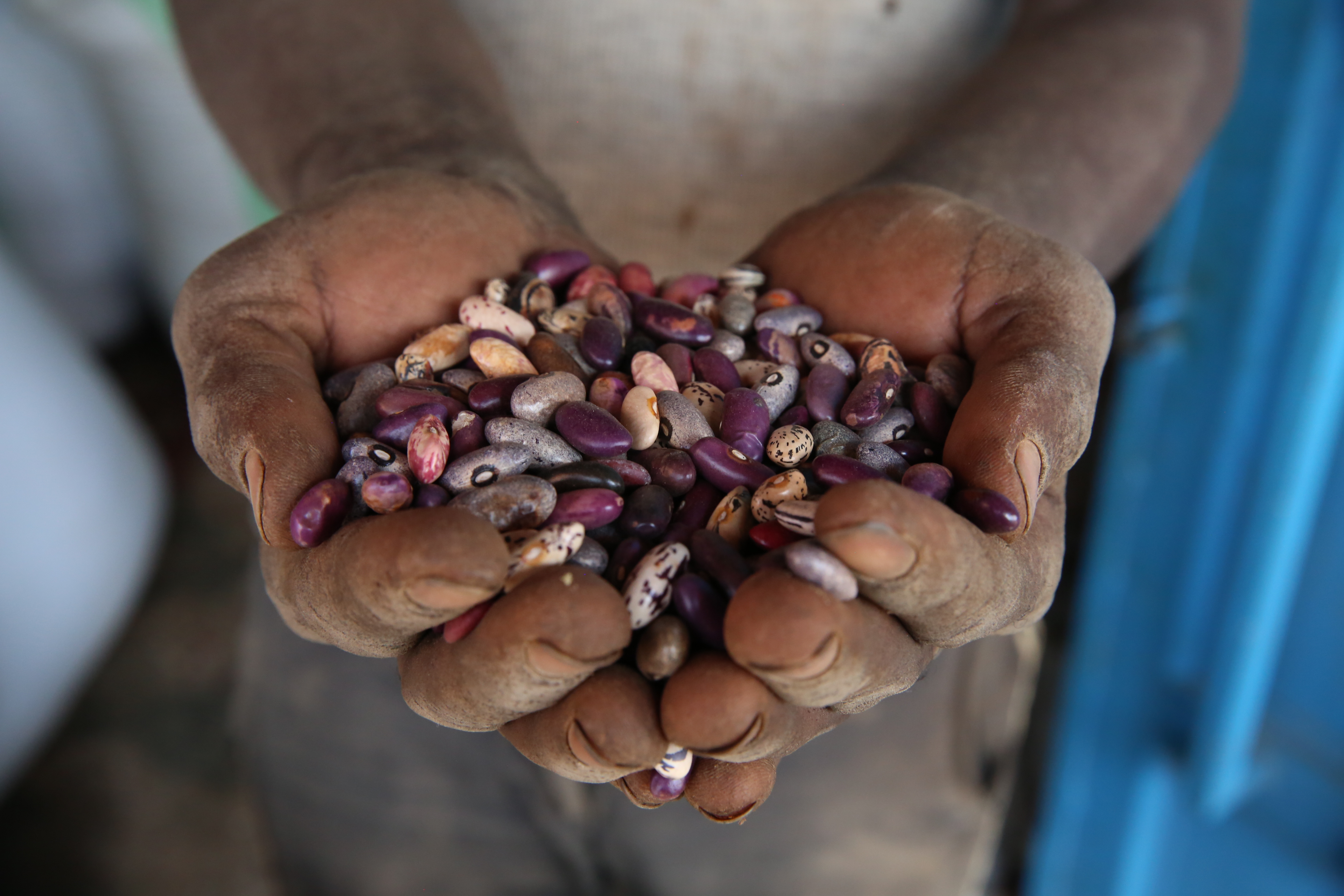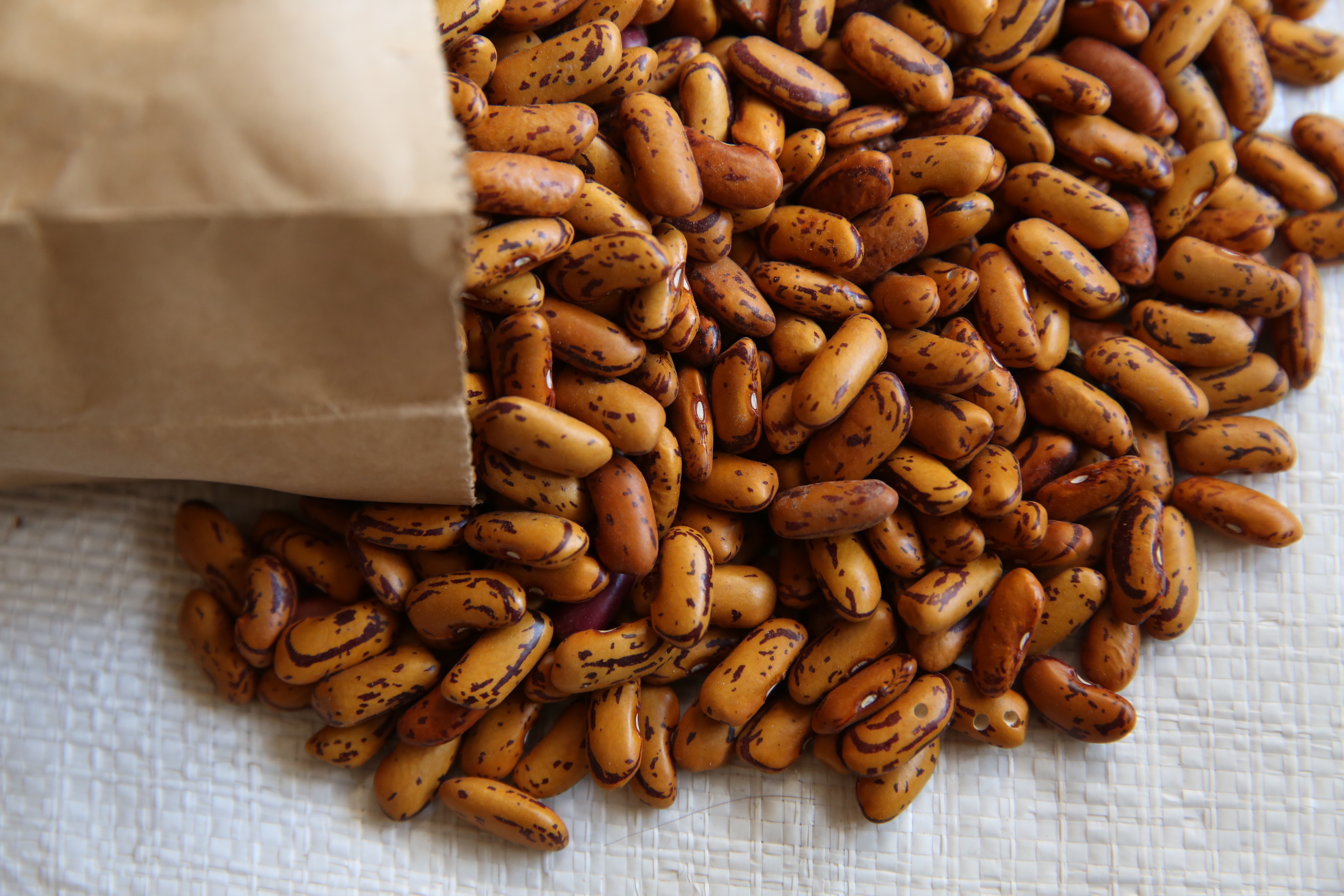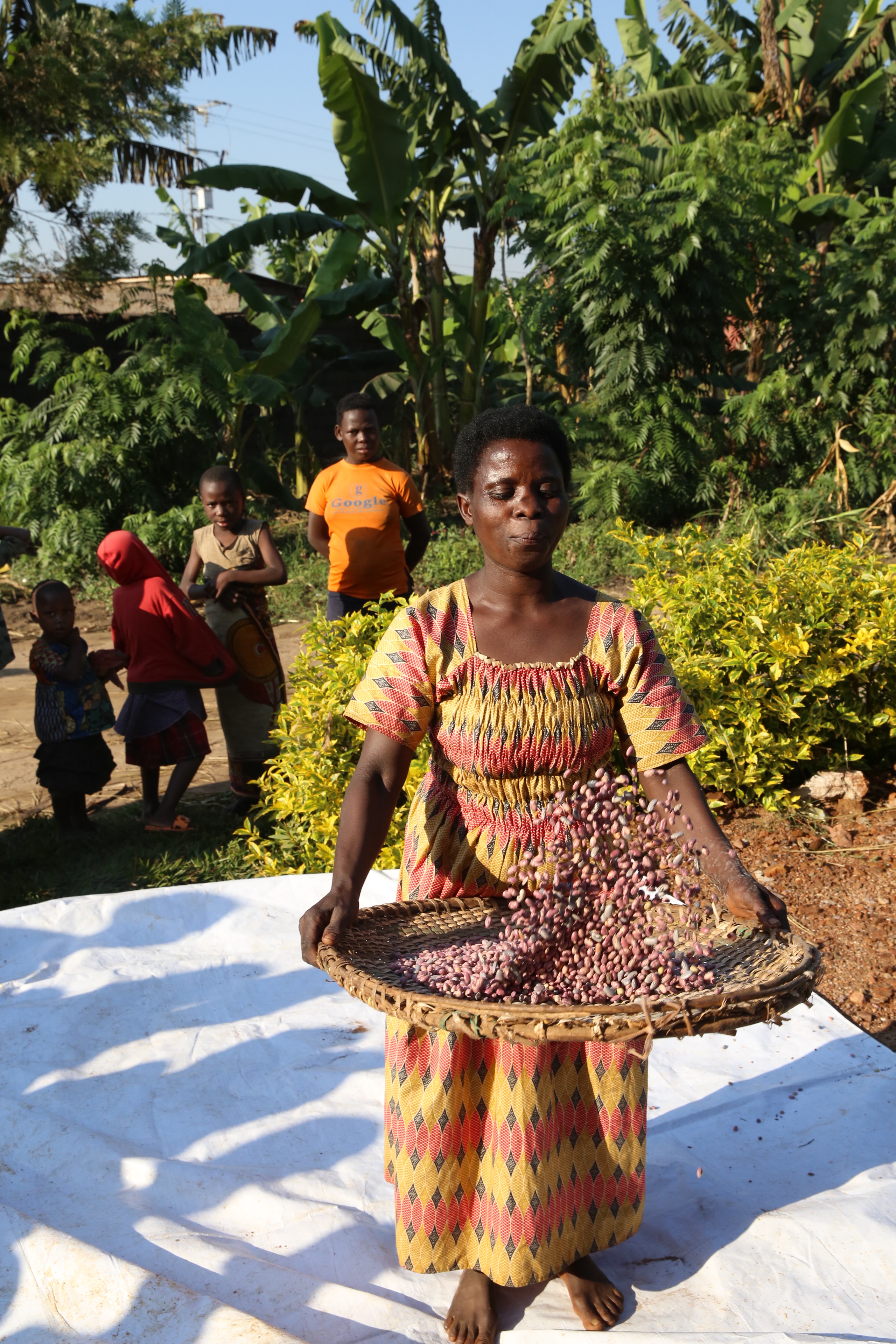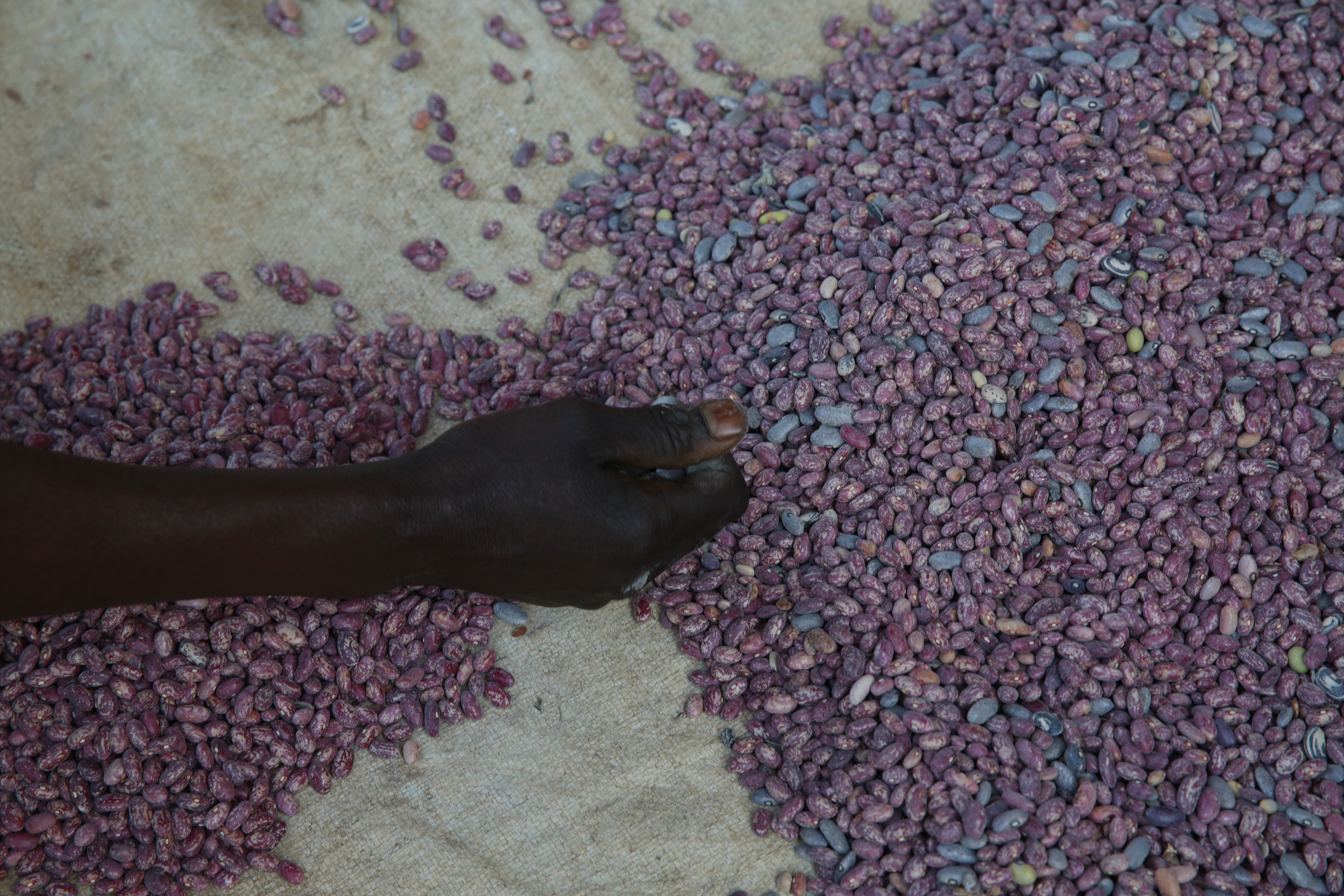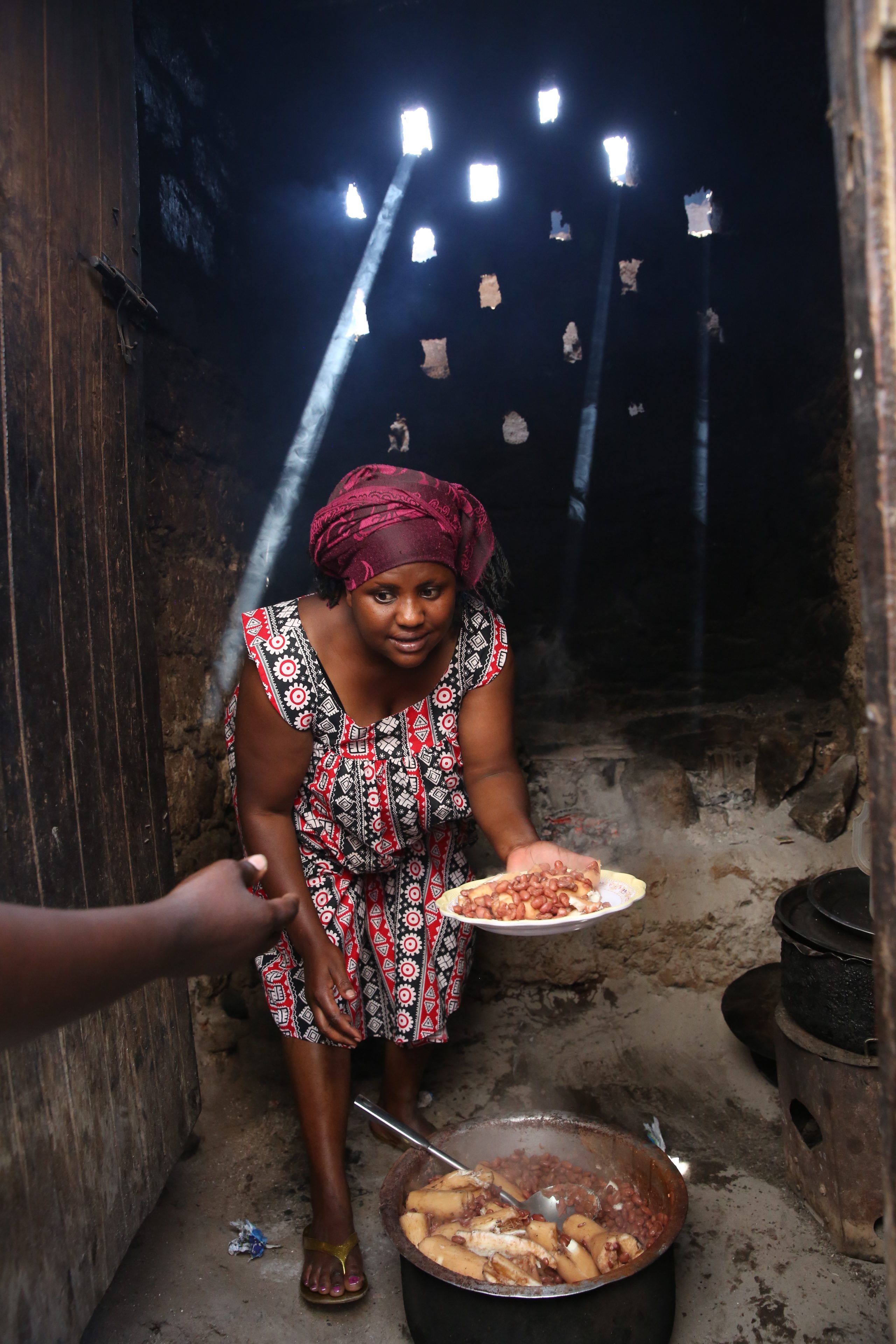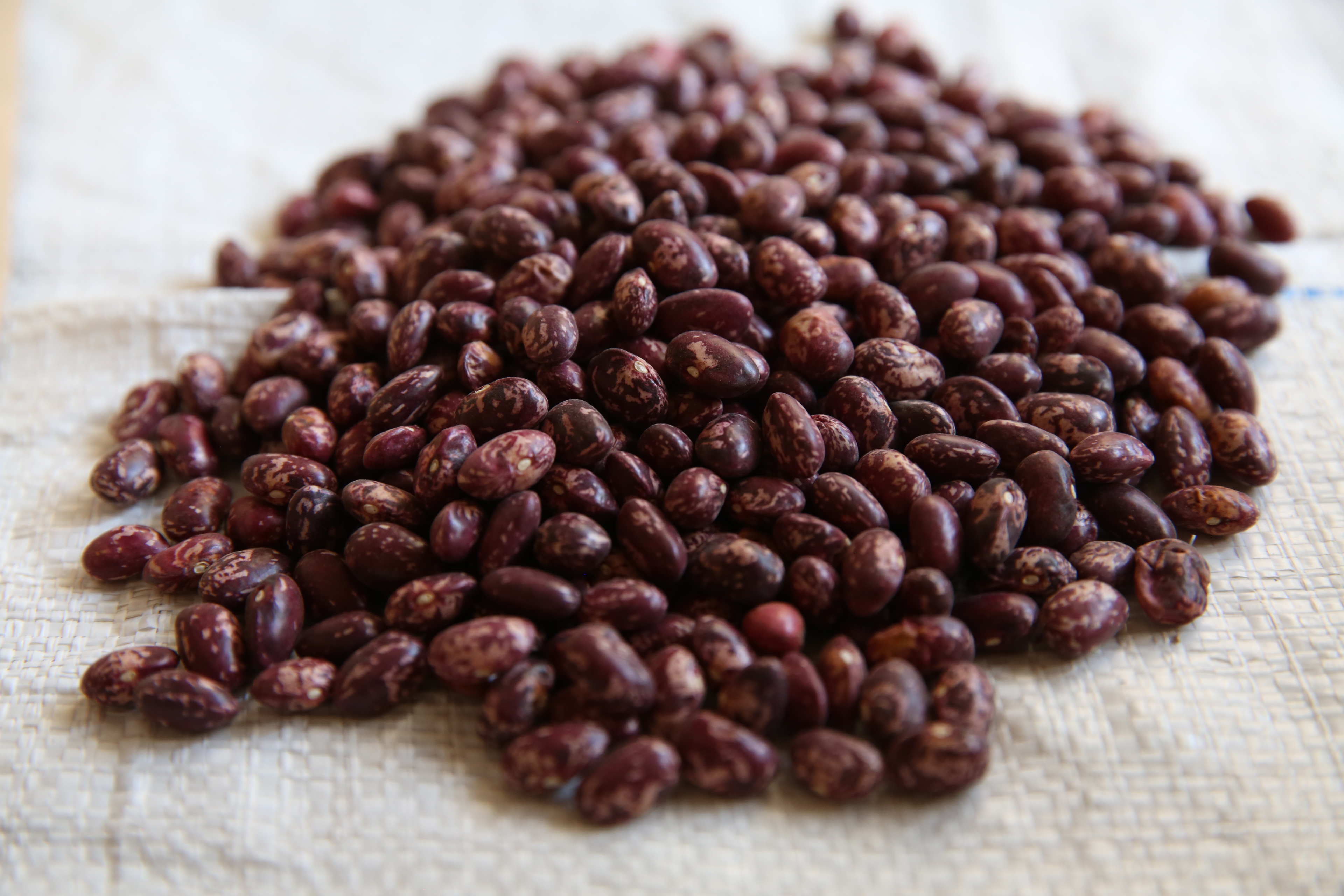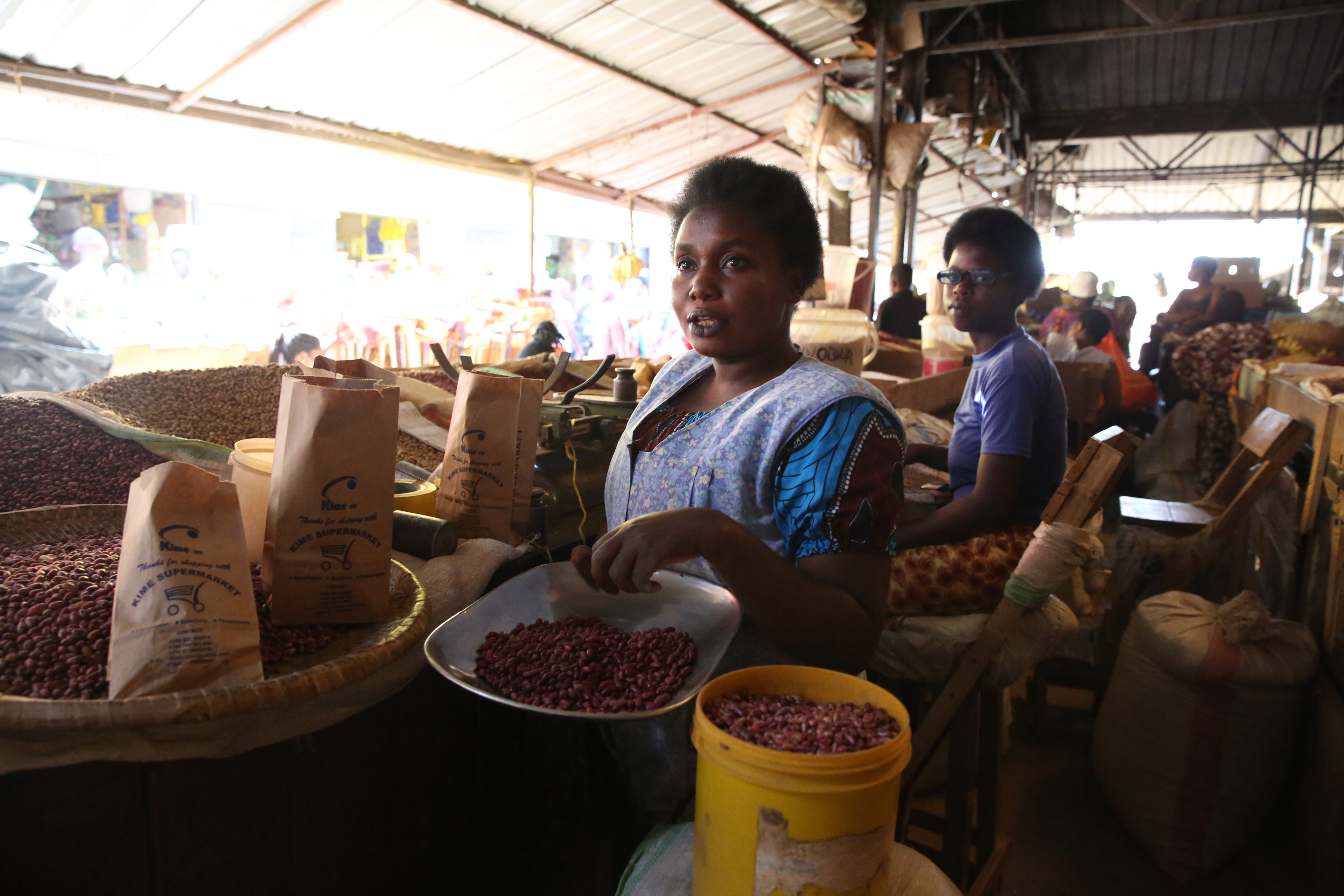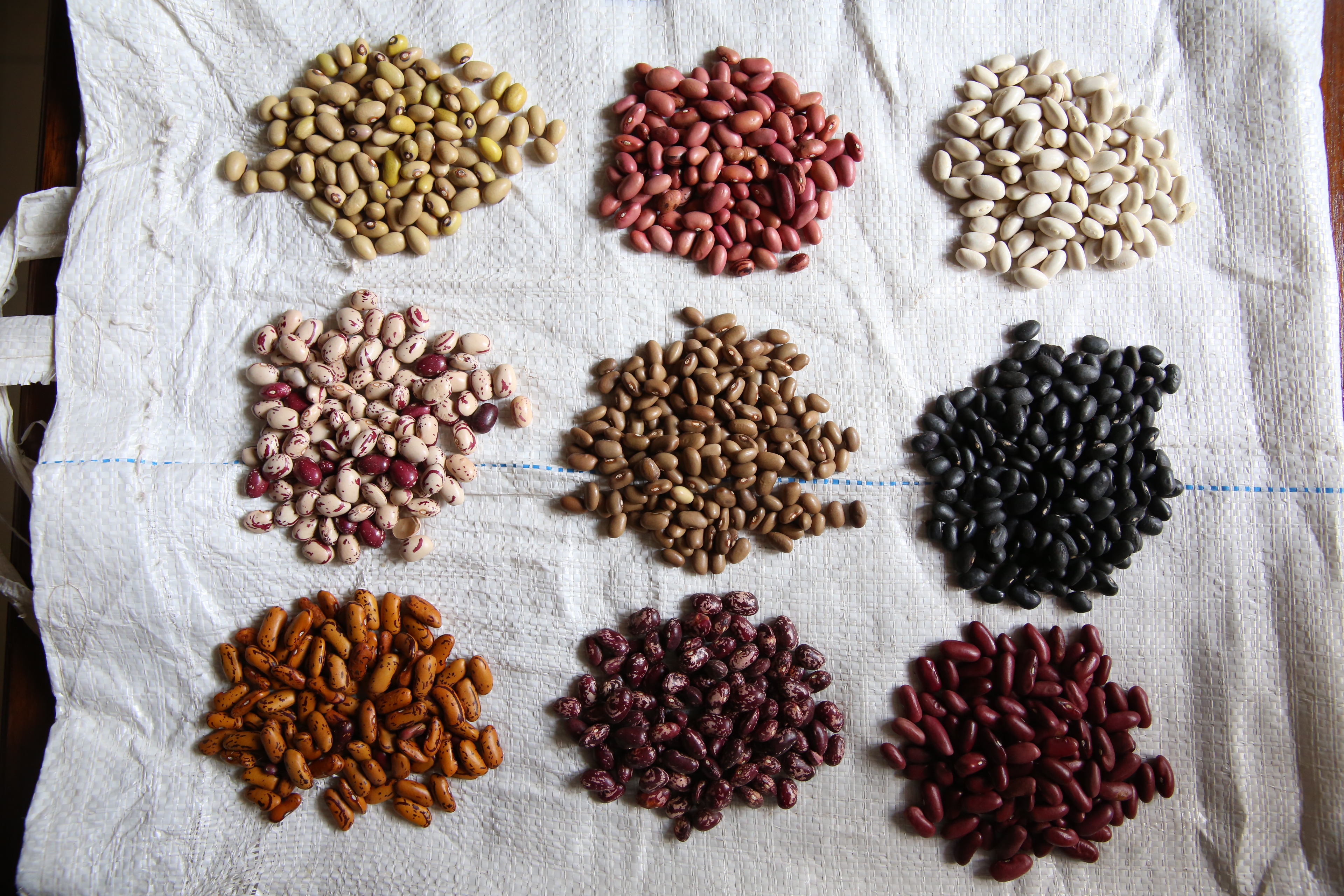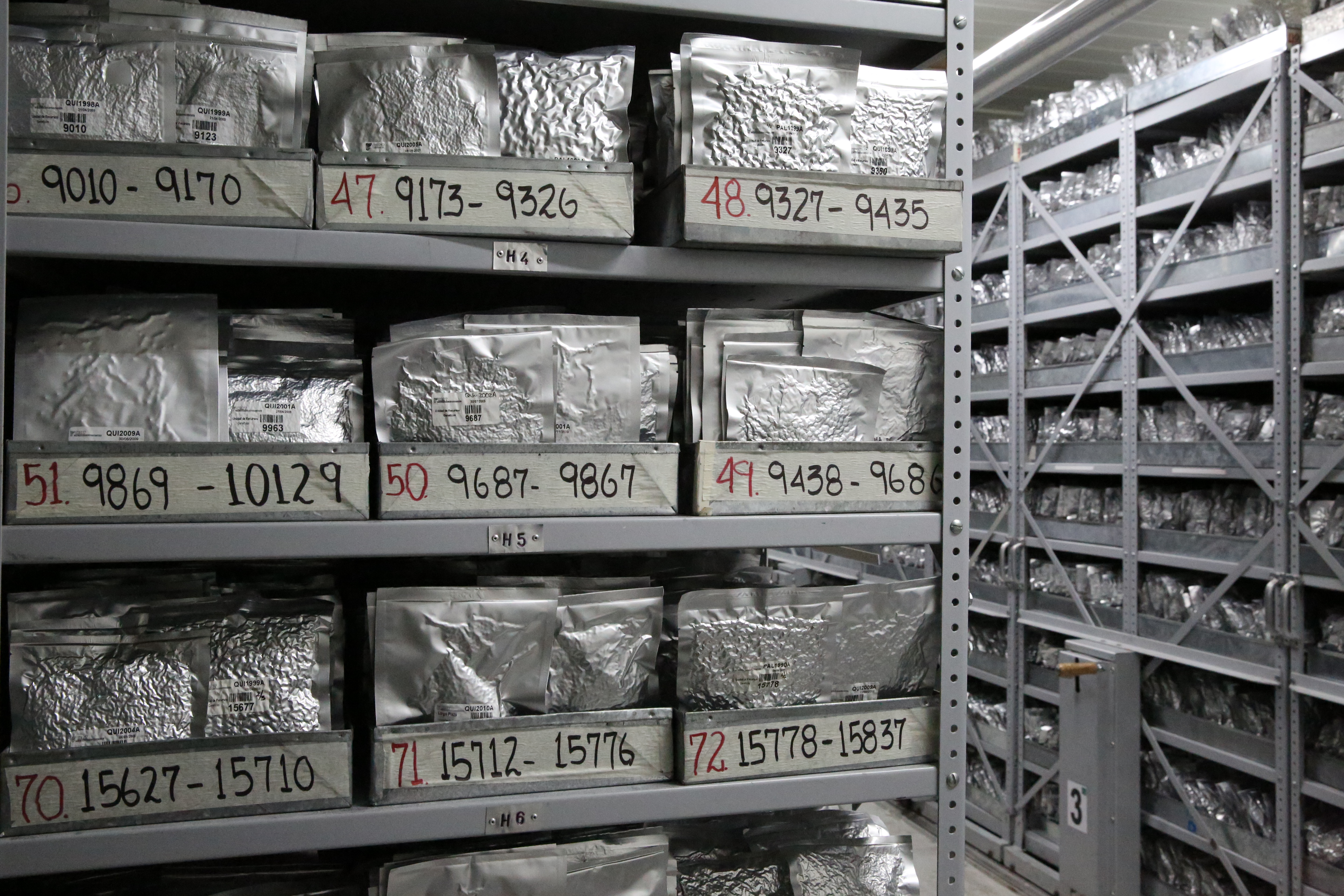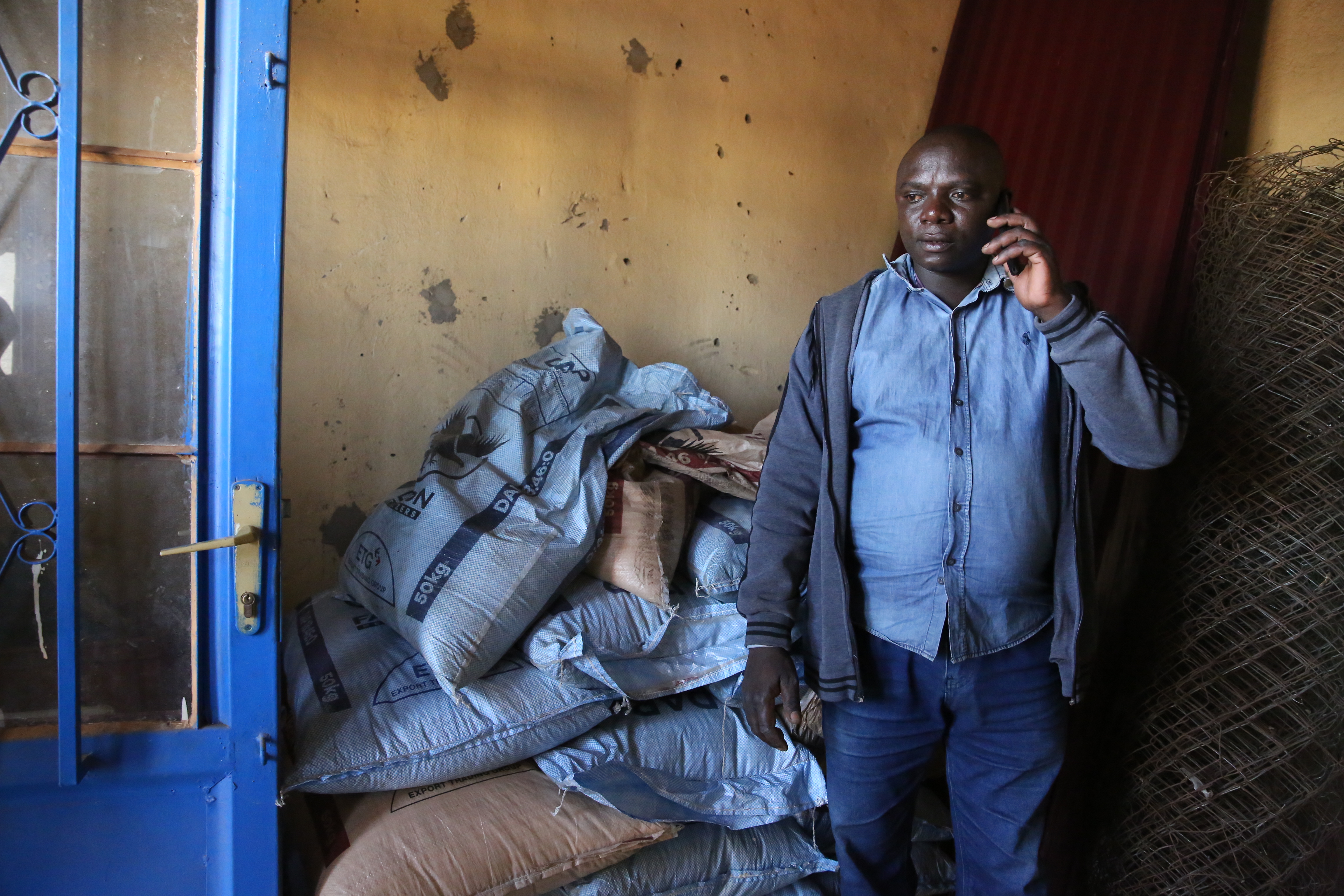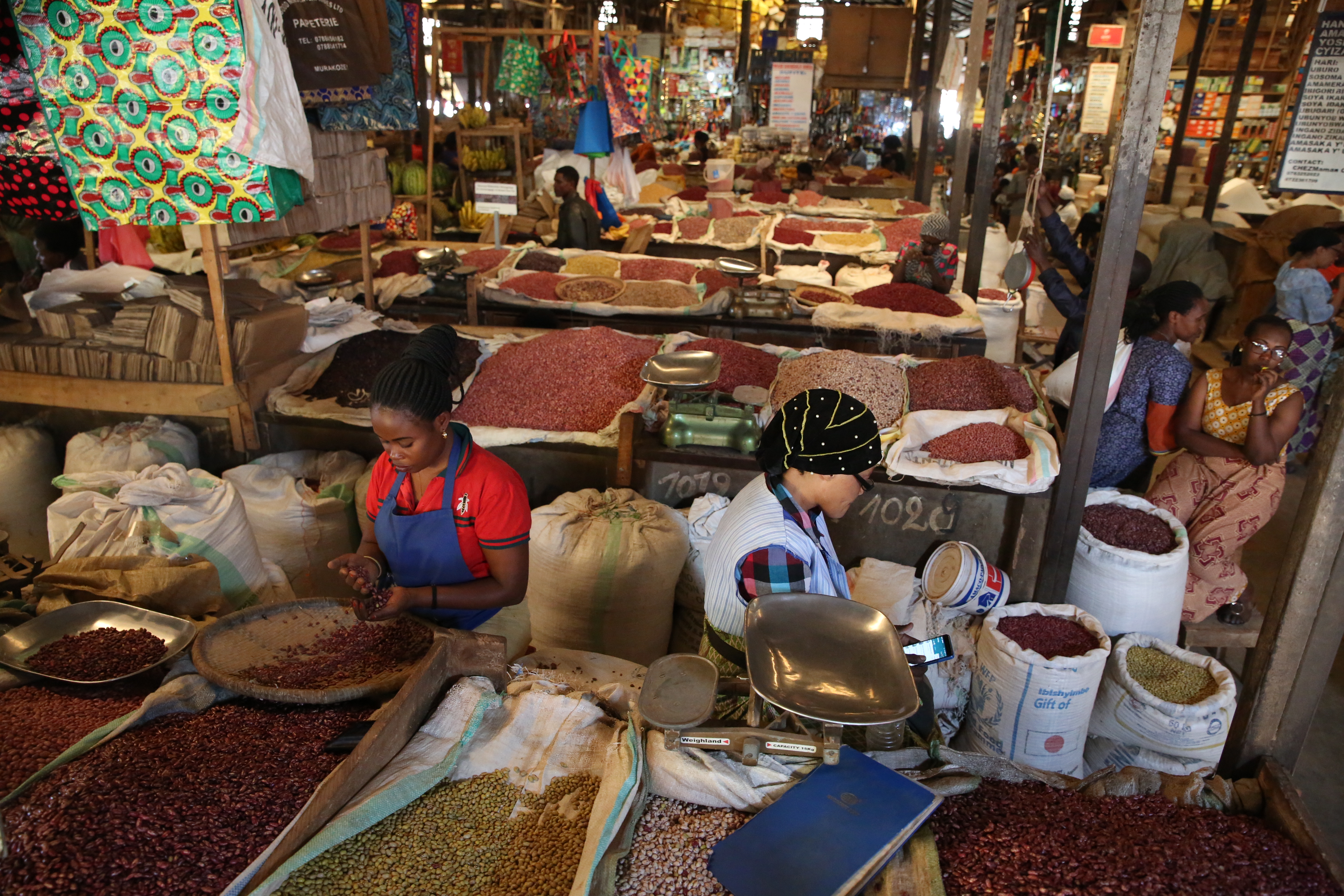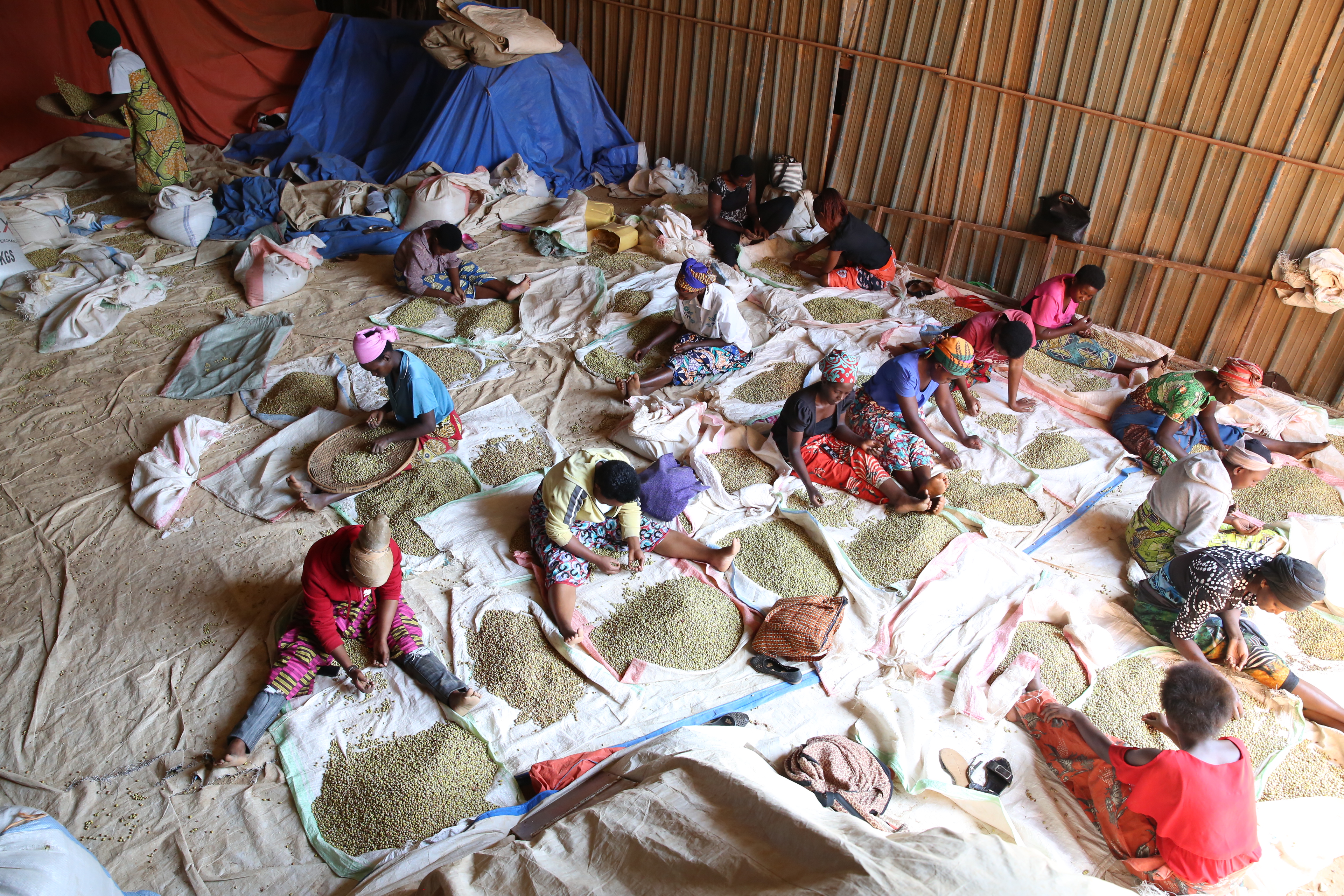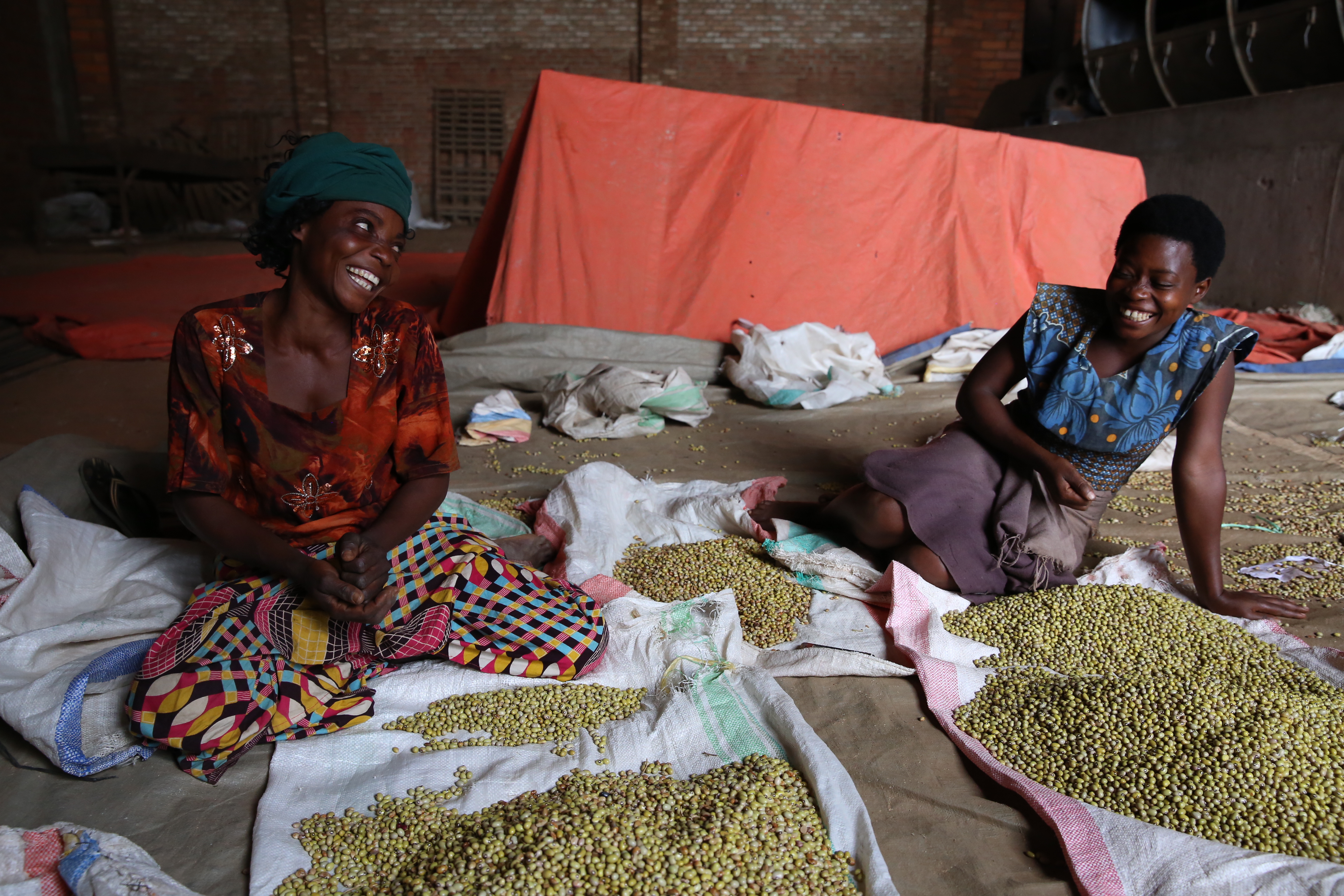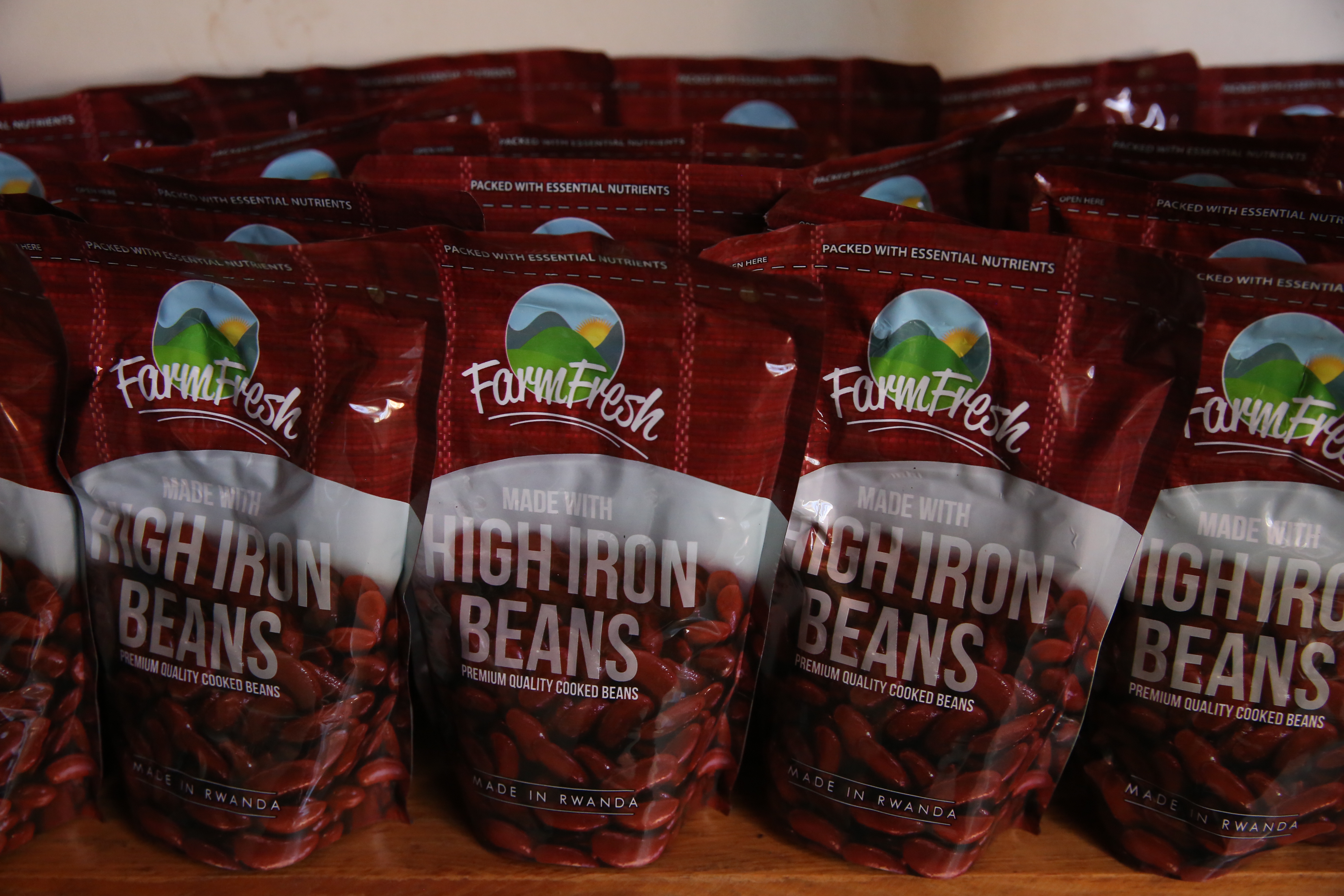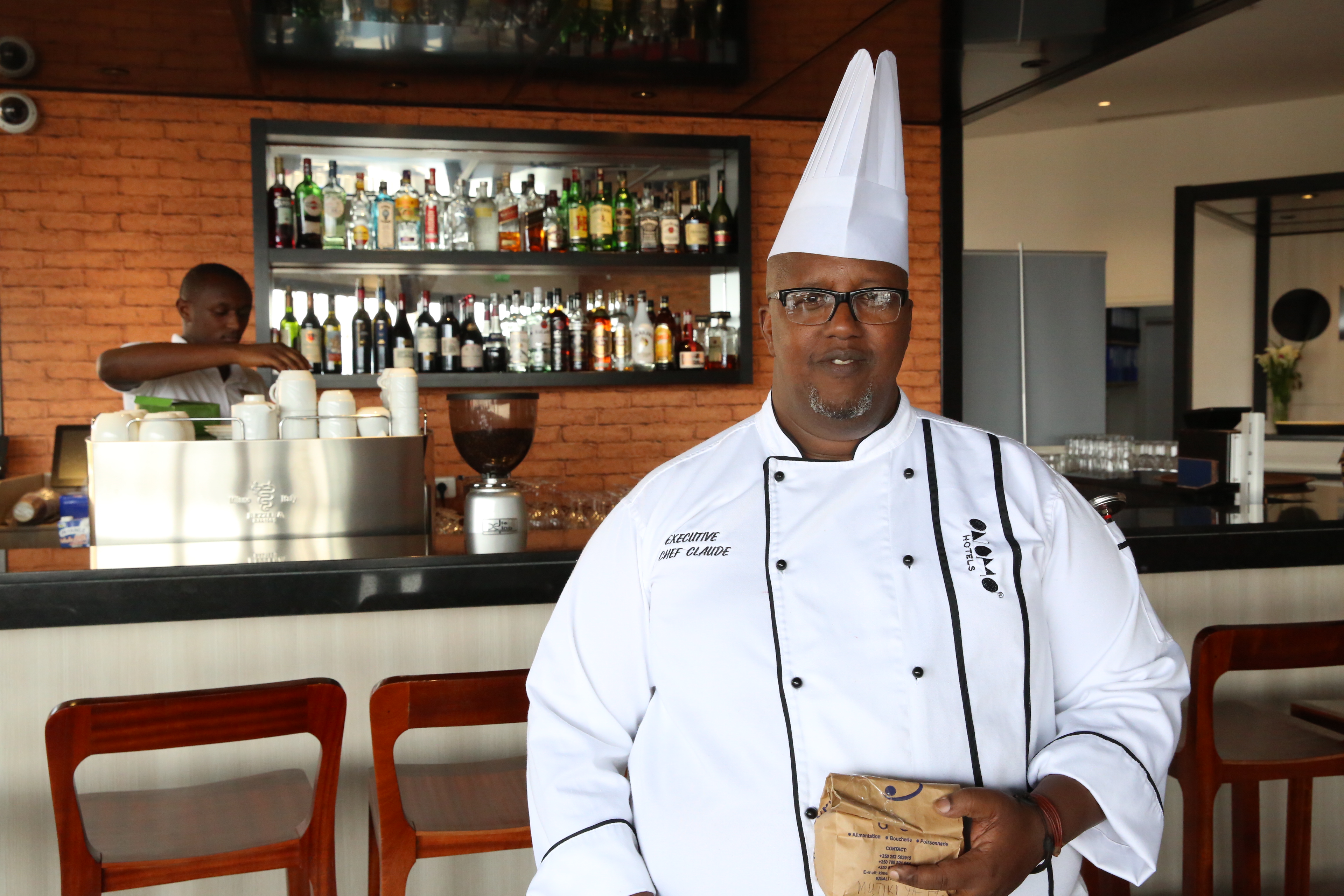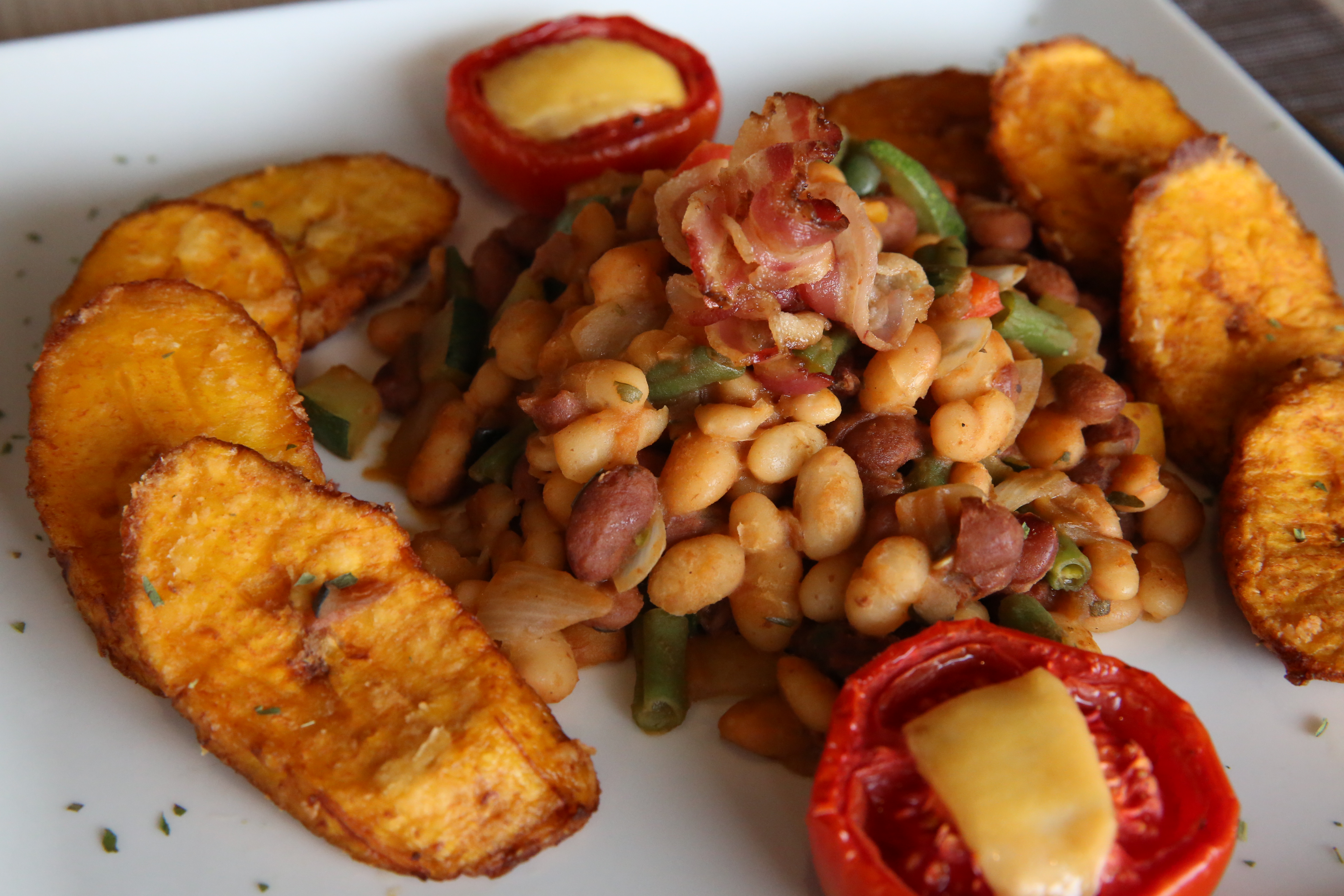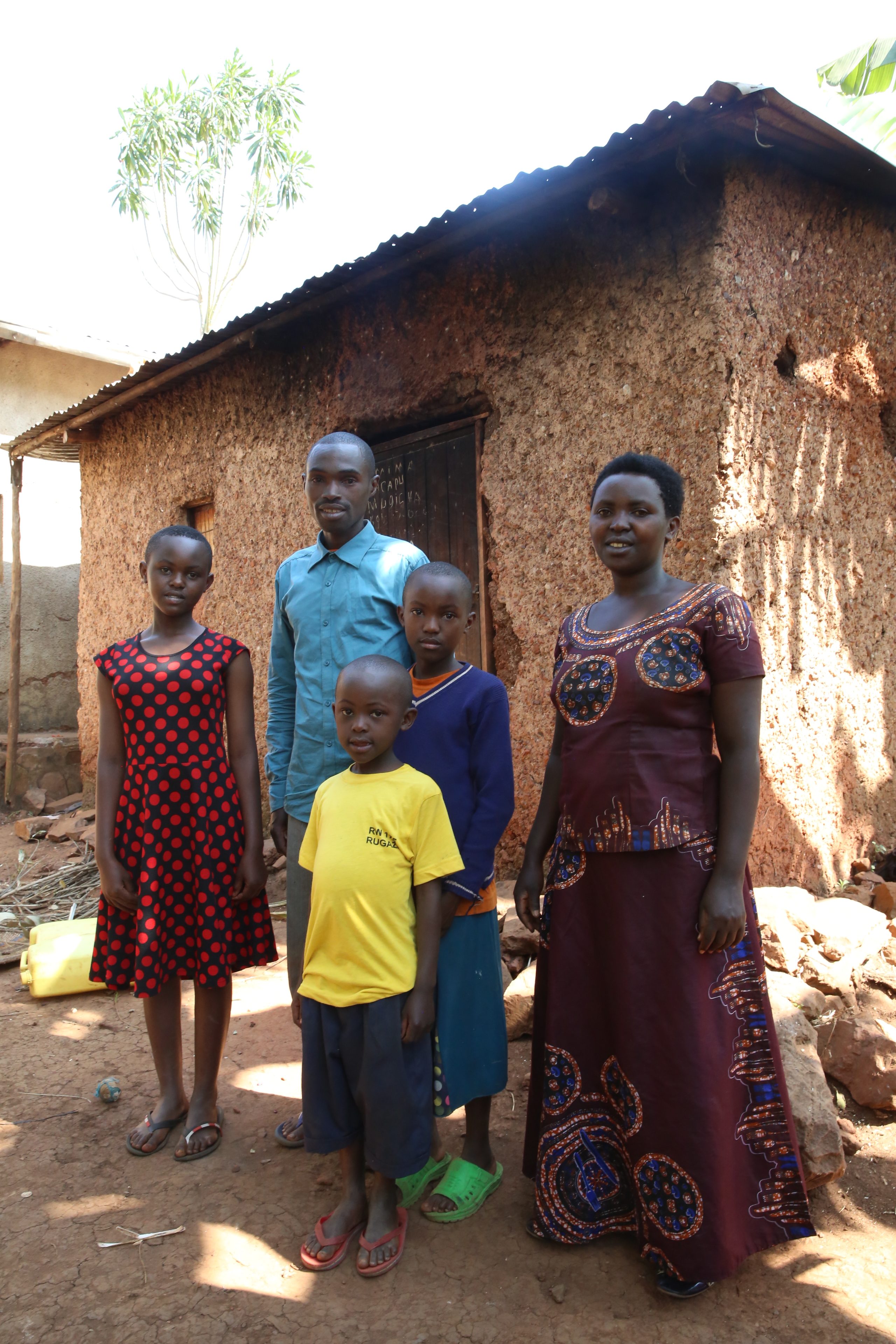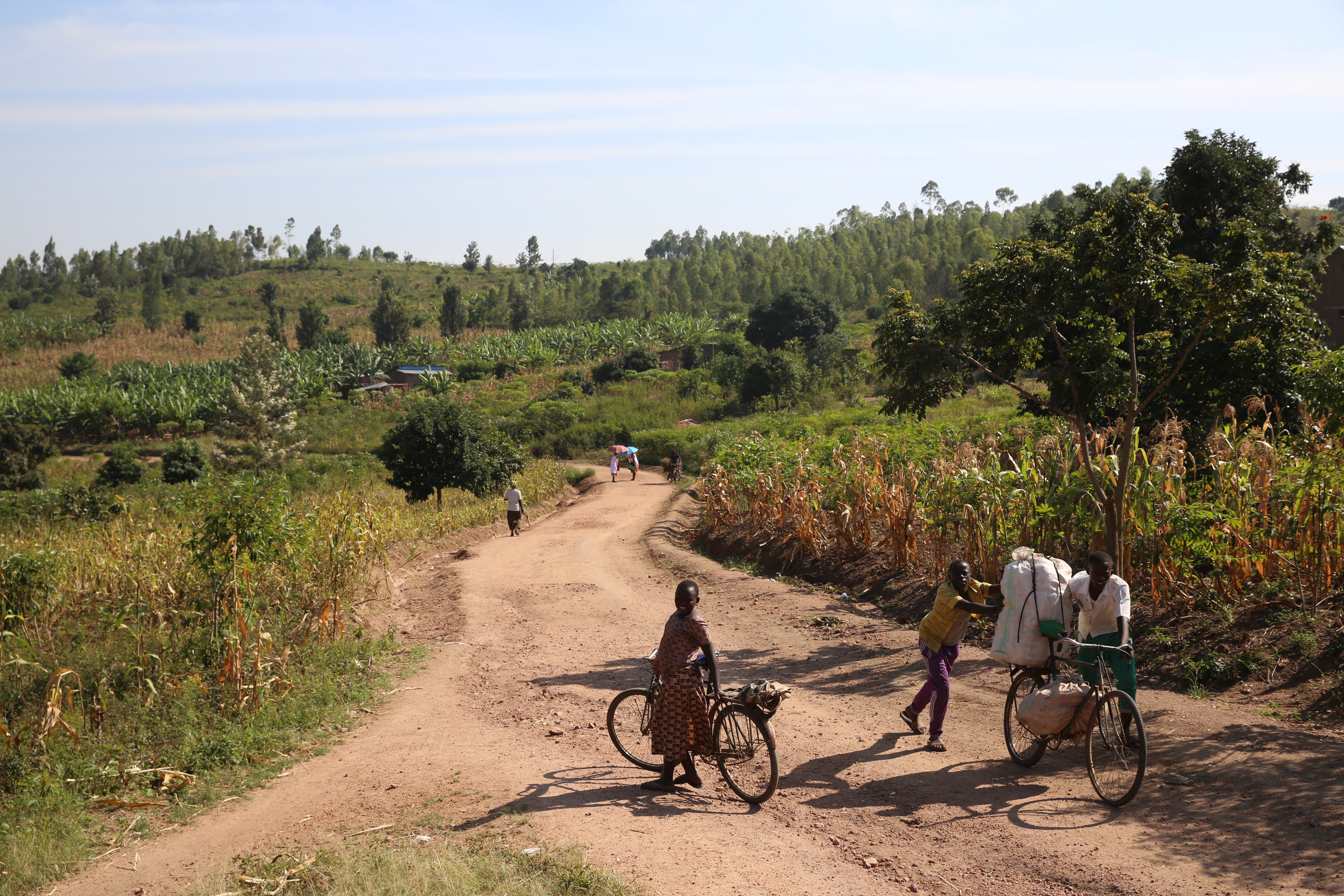-
Of humanity’s essential food crops, perhaps none is less honored than Phaseolus vulgaris, labeled in both Latin and English as the “common bean”. Although it is certainly common, and ever-present in many of the world’s great cuisines, it is rarely celebrated. But things are different in Rwanda – the adopted second homeland of beans and the most bean-eating nation on Earth.
-
C’EST LA RICHESSE
A #CropsInColor story on the importance of beans in Rwanda
Text by Paul Cox, Scriptoria for #CropsInColor
Photos and additional reporting by LM Salazar
-
The dried plants have been brought in from the fields on bicycles. The beans have been threshed out of their pods, but there is still a big job to do.
-
Like so much in the world of beans, it is women who do the job. All over Rwanda, women sit together and clean the harvest by hand, bean by bean. It may be for the pot, for the market, or, as here, to save or sell for next season’s seed. The beans must be clean – to look their best, to taste their best, and to be ready for the next field where they will sprout anew.
-
Although it is one of the smallest countries in Africa, Rwanda stands among the ten largest producers of beans in the world. Rwandans eat around 60 kilograms of dry beans per year, on average, and have countless recipes centered on this important crop. Matching the quantity of production is its diversity; bean farmers and cooks always have a multitude of colorful types to choose from, and a multitude of opinions about the advantages of each.
-
Beans, however, are a New World crop. They have been grown in the Americas for thousands of years, and came to Central Africa only around the seventeenth century, carried by a long chain of Spanish, Portuguese, Arab, and African hands. Far away from the lands where wild beans were domesticated, why are they so essential and so diverse here in Rwanda?
-
The answer lies in the connection between beans, people, and land. Across rural Africa, beans tend to be most important where the density of people and farms is highest. With more than 500 residents per square kilometer, Rwanda is in a class of its own.
-
On a small Rwandan farm nothing else will fill the dinner pot like a harvest of beans. They are fast-growing, allowing for production twice a year. They can enrich the soil with nitrogen as they grow. They are also shade-tolerant enough to plant in the same field as other, taller crops that round out the meal, like maize, banana, or the cassava in Jeanne Mukansanga’s pot, pictured here.
-
In other words: beans feed people. And they can feed people even better.
-
In recent decades, Rwandan farmers have adopted climbing varieties that reach up towards the sun to produce more than triple the beans on the same hectares. They are also taking up production of iron-rich “biofortified” beans. These varieties meet up to 80% of daily iron needs, to the greatest benefit of mothers and young Rwandans.
-
“Can’t you tell I eat high-iron beans?” jokes Julienne Uwishoreye, a merchant at Kimironko Market in Kigali. In her nine years working here, she has sold wheat, sorghum, millet, and groundnuts, but her biggest seller is always beans. She displays a wide selection for every taste, and many customers are seeking out the new high-iron varieties.
-
These new options on the market – iron-rich beans and climbing beans – have not appeared by chance. They are the results of decades of efforts to bring farmers new options, including the work of breeders at the International Center for Tropical Agriculture (CIAT), the HarvestPlus program, and the Pan Africa Bean Research Alliance (PABRA), collaborating with the Rwanda Agricultural and Animal Resources Board (RAB).
Rwanda has been a pilot country for these initiatives, and the biofortified varieties in particular are now being distributed to farmers worldwide.
-
Most of the efforts can be traced back to one place: the international bean collection held in trust by CIAT in Cali, Colombia. CIAT conserves nearly 40,000 accessions of Phaseolus from all over the world, safeguarding the diversity of this crop for the long term and allowing breeders anywhere to receive samples under the International Treaty on Plant Genetic Resources for Food and Agriculture.
-
The beans housed at low temperatures here were not selected for their special qualities, but simply to form the most diverse collection possible. Greater diversity means more options when a new challenge arises; breeders can comb through the collection and find genetic possibilities that might never have been recognized or tested. The challenge could be a new crop disease, a shift in climate – or the challenge of ending iron deficiency through Rwanda’s favorite dish.
-
“High-iron is very sweet,” says Gaspard Halerimana, an aggregator who makes his living buying beans from farmers in eastern Rwanda. The demands of the market have led him to concentrate on two high-iron varieties, one a climbing bean and one a bush bean. He also buys creamy white beans, prized by shoppers in Kigali, and another local red type whose desirability is reflected in its popular names: guraigare (‘by bicycle’) or akararakagenda (‘spent a night walking’).
-
When he says the new beans are sweet, he means it. “I like them a lot too. I eat beans every meal, every day,” Halerimana says. “But beans also represent money.”
-
High demand and under-supply of high-iron beans has meant a price premium, which is great for an aggregator like Halerimana and for the hundred or so farmers he buys from, but not yet necessarily for the iron-deficient poor. So now that the seeds are out there, HarvestPlus and CIAT are concentrating on strengthening the whole market system to make more biofortified beans available to everyone.
-
Rising productivity – credited most of all to the sky-high yields of the new climbing beans – has also transformed Rwanda from a bean importer to an exporter. In a warehouse outside of Kigali, contract workers perform the old task of cleaning beans on a grand scale.
-
The beans are a yellow type popularly known as colta, one of the finest, highest-value beans on the market. The name is a boast: it suggests that the beans are as valuable as coltan, a booming mineral export. For this rich agricultural ore, the destination is Oman. The source is a group of some 460 farmers in the north who partner with the exporter, BRG (Best In Rwanda Group), to achieve this large collective harvest.
-
An expanding middle class in Rwanda, too, has raised a demand for quality and convenience in beans. Rather than turning to imported products to supply this market, the government has sought investors to partner with the country’s own producers. One company, Farm Fresh, is now buying beans from smallholder farmers and packaging them cooked into pouches.
-
And chefs like Claude Bigayimpunzi at Kigali’s Onomo Hotel are celebrating the best of Rwandan foods, bringing the diversity of local beans and other ingredients into the international cuisine that is their stock-in-trade.
-
A signatory of the SDG2 Advocacy Hub’s Chefs’ Manifesto, Bigayimpunzi has plans to grow some of his own produce and organize dinner tours to different regions of Rwanda. And, he says, beans will always be on the menu.
-
Perhaps the common bean is in for its long overdue celebration. It’s already changing lives, as new varieties and markets spread through Rwanda.
-
In the eastern district of Kayonza, Francois Nsanzimana and Egidie Murekatete grow beans, corn, and cassava on their family farm. They have begun planting MAC44, a high-iron climbing bean variety. This past season, they harvested 200 kilos of the variety from a 1,200-meter square plot: 100 kilos to eat at home and 100 for the nearby market.
-
These farmers, too, see money in beans – “c’est la richesse”, expresses Nsanzimana. These beans are food, health, iron for their growing children; a rich harvest for a rich future.
-
Rwanda is alive with hopes like theirs. Across the countryside, farmers plant a fabulous diversity of crops, but share a single wish: to grow enough for everyone from this fertile soil.
-
Get Involved
Conserving crop diversity is the first and most crucial step to ensuring food security. There are many ways to support the Crop Trust, get involved today!
-
#CropsInColor celebrates the critical importance of crop diversity and its beauty and cultural relevance across different landscapes. It highlights many key actors in our food systems – from consumer to farmer to seed bank – who are doing their part in safeguarding, making available and using crop diversity.
The Crop Trust #CropsInColor campaign is sponsored by Corteva Agriscience with additional funding provided by Oak Spring Garden Foundation. Media partner Food Tank.
